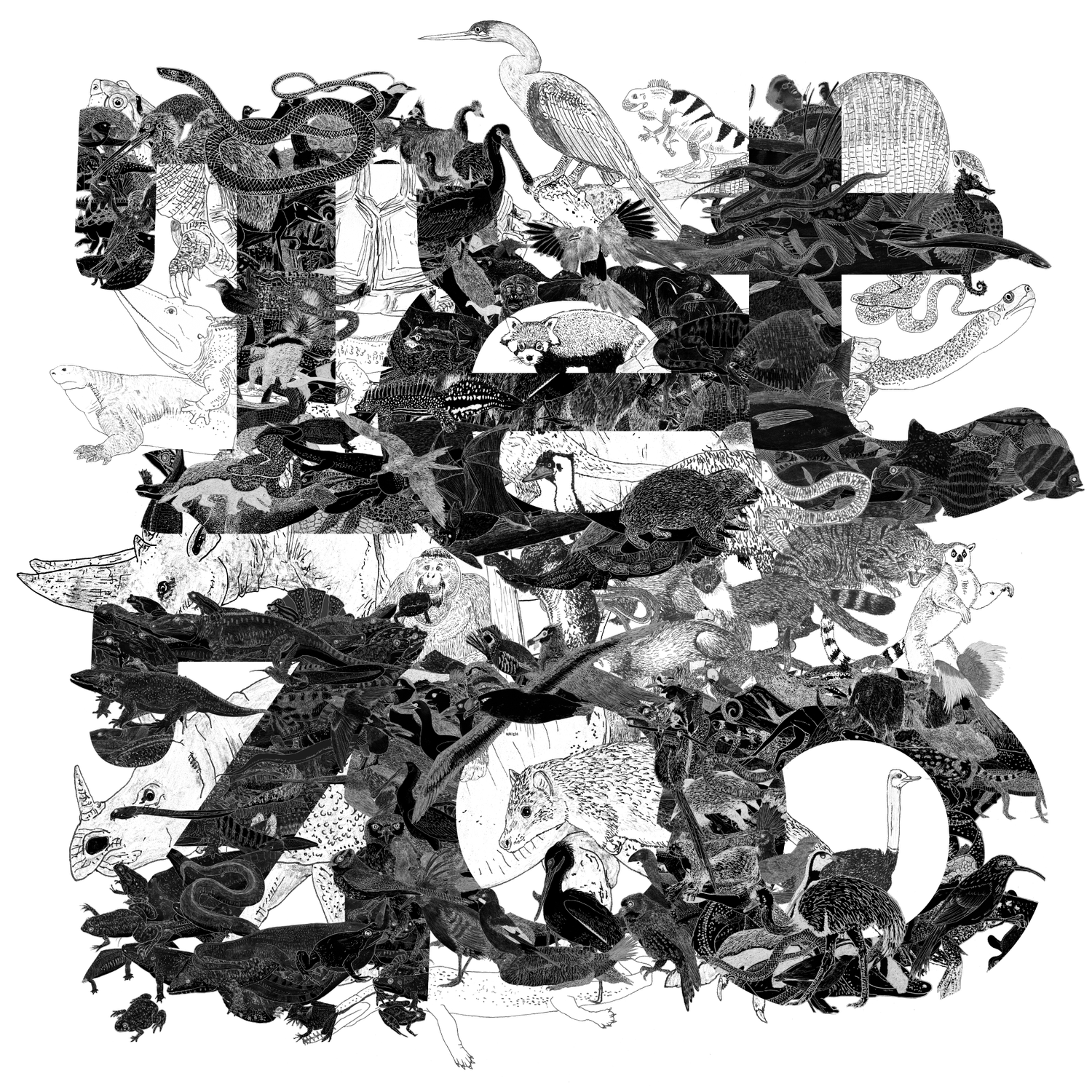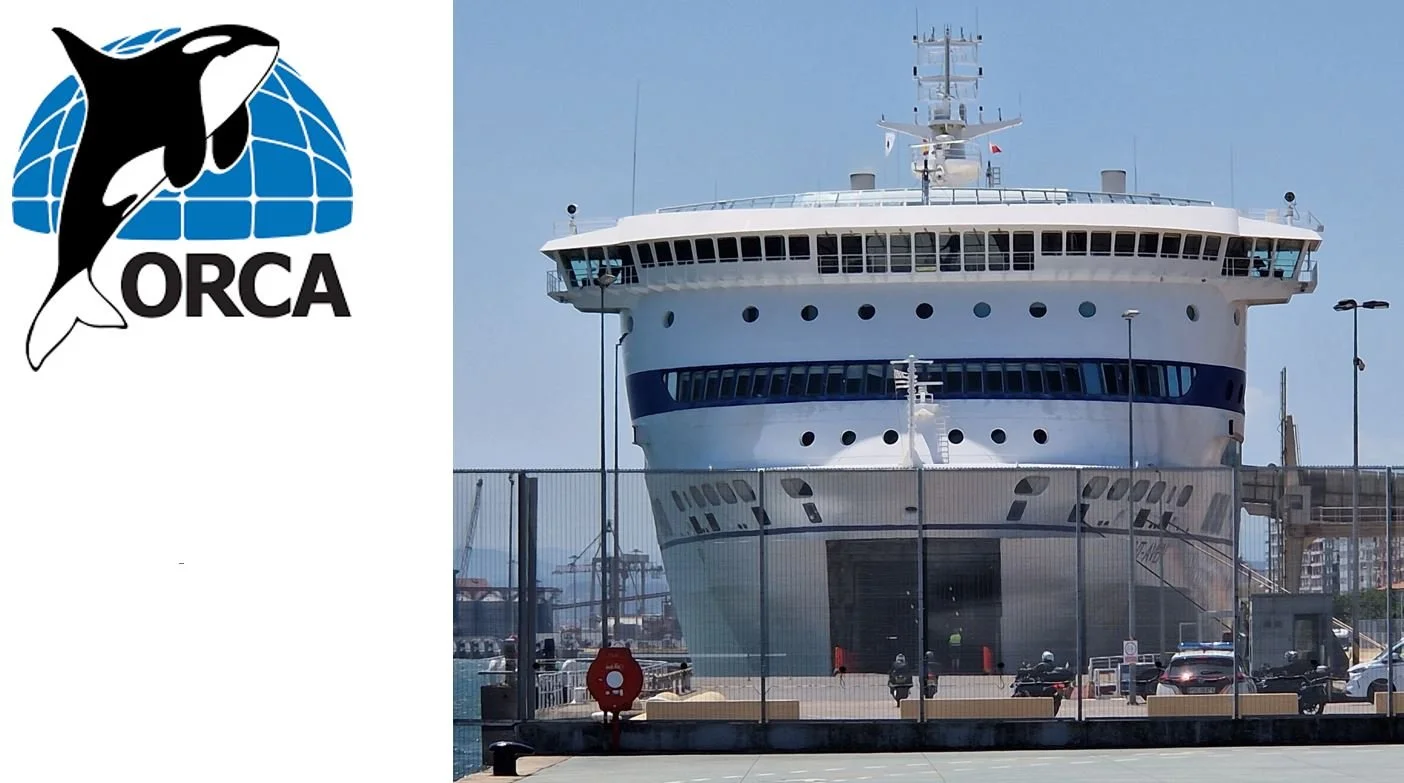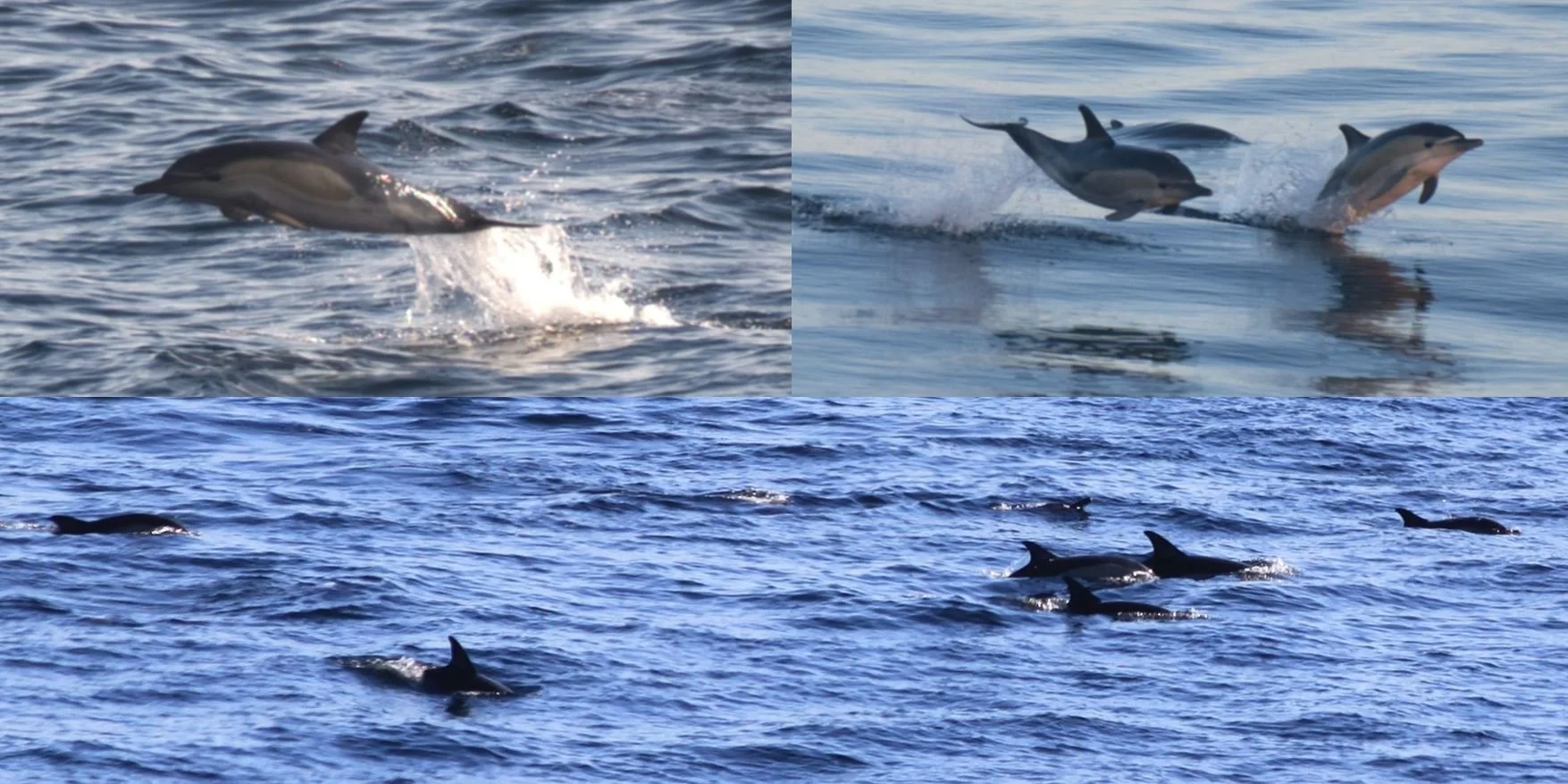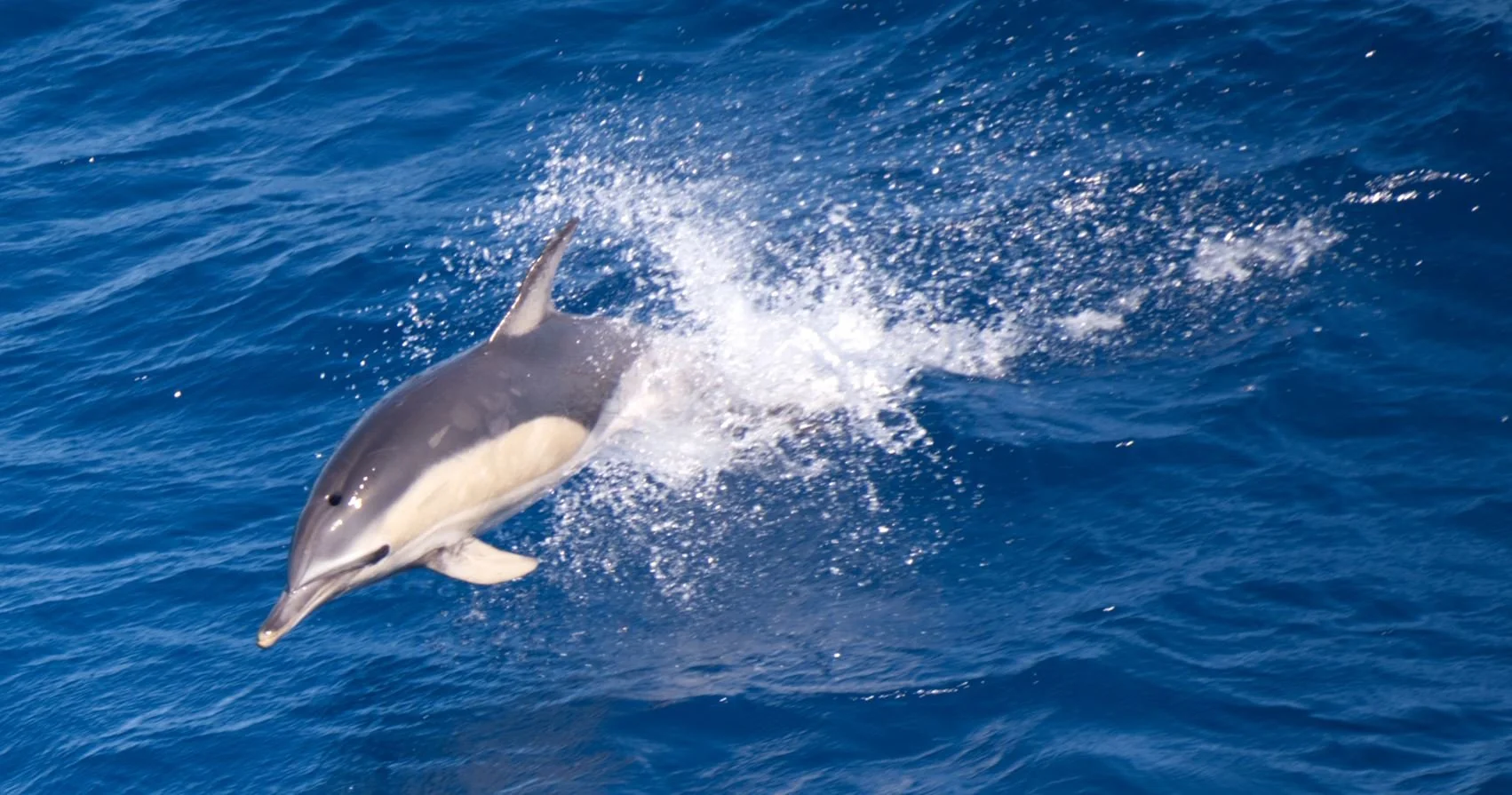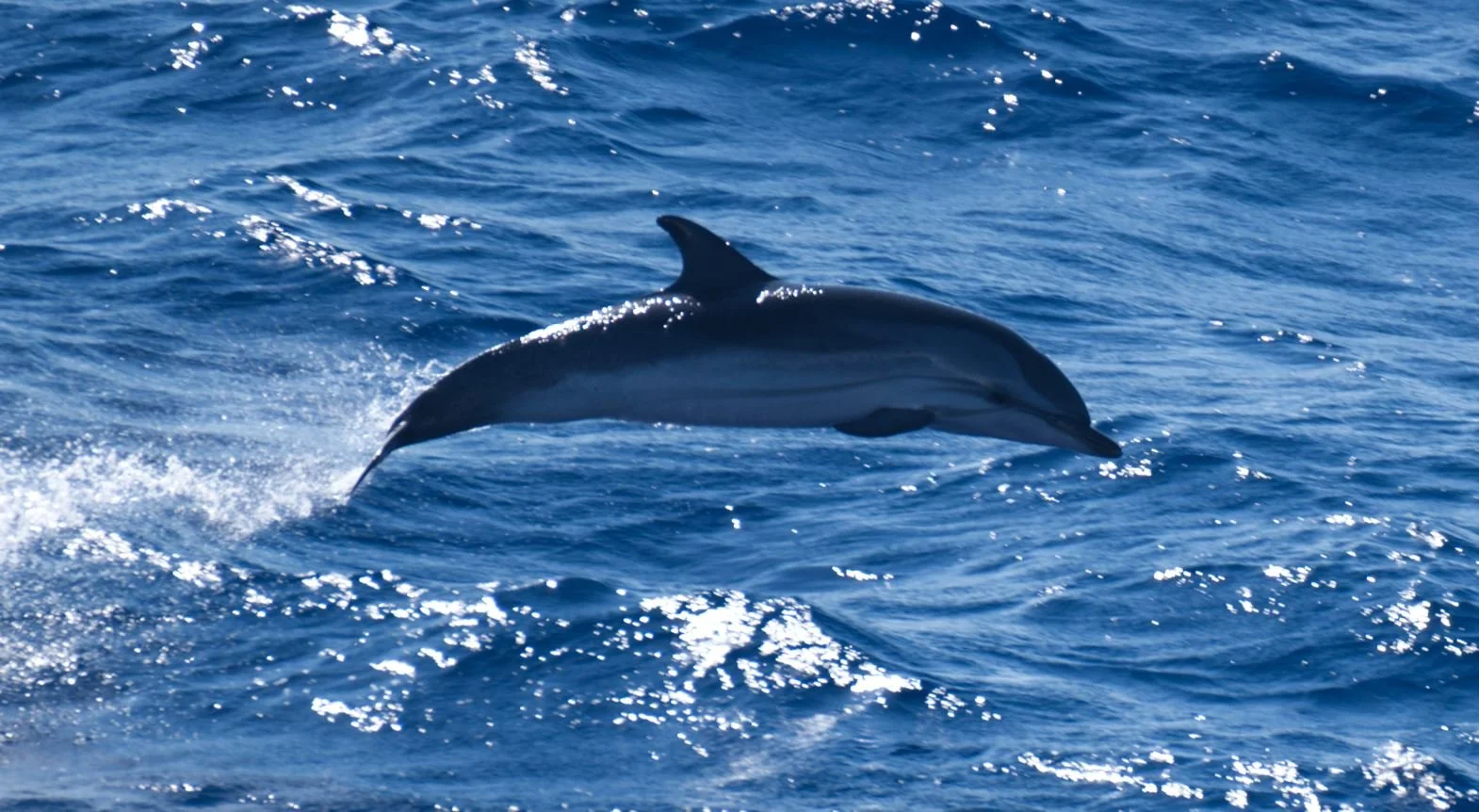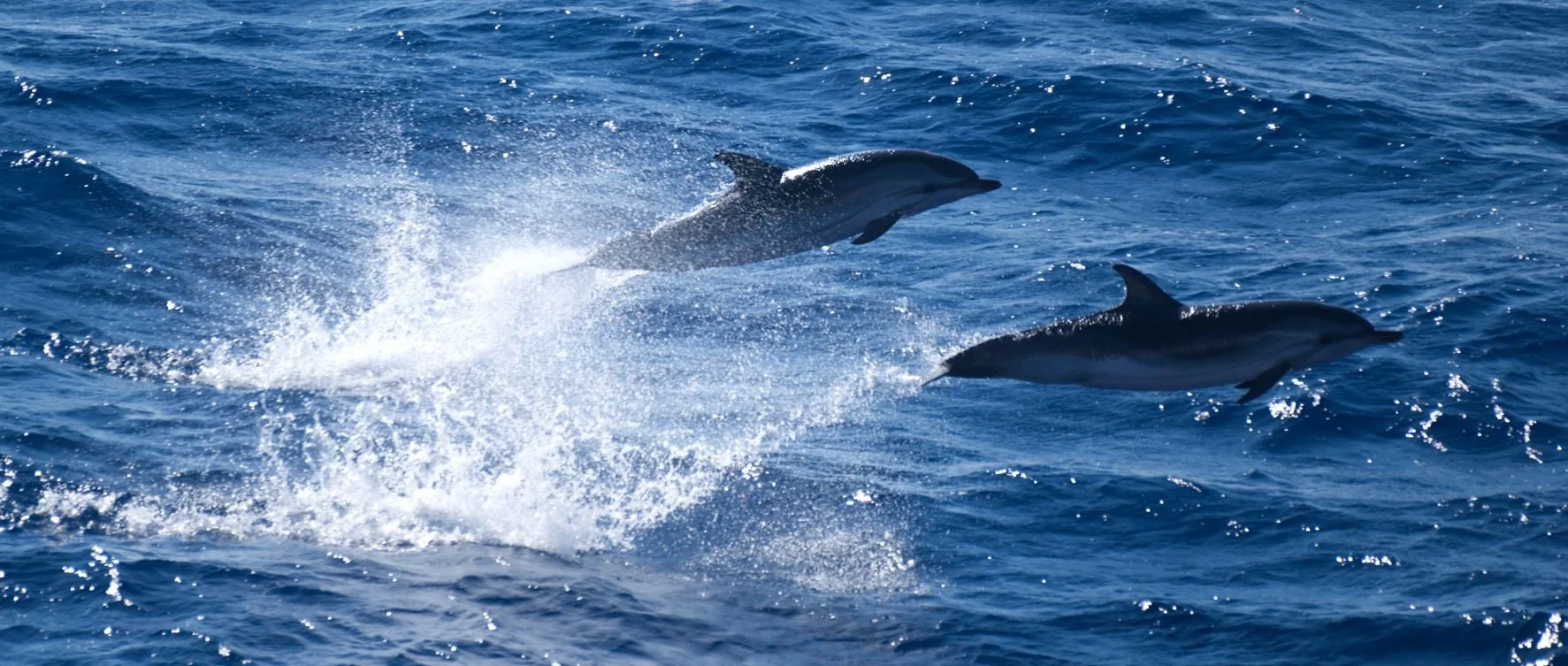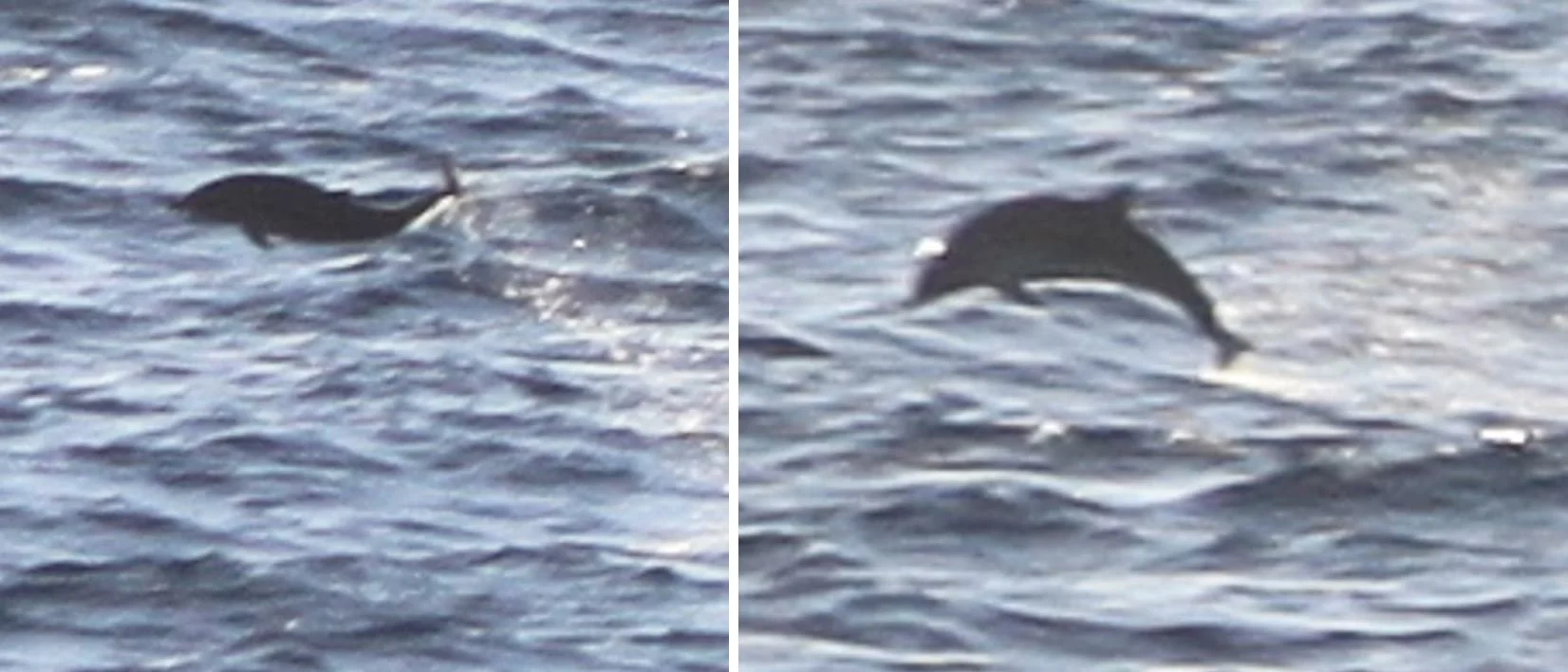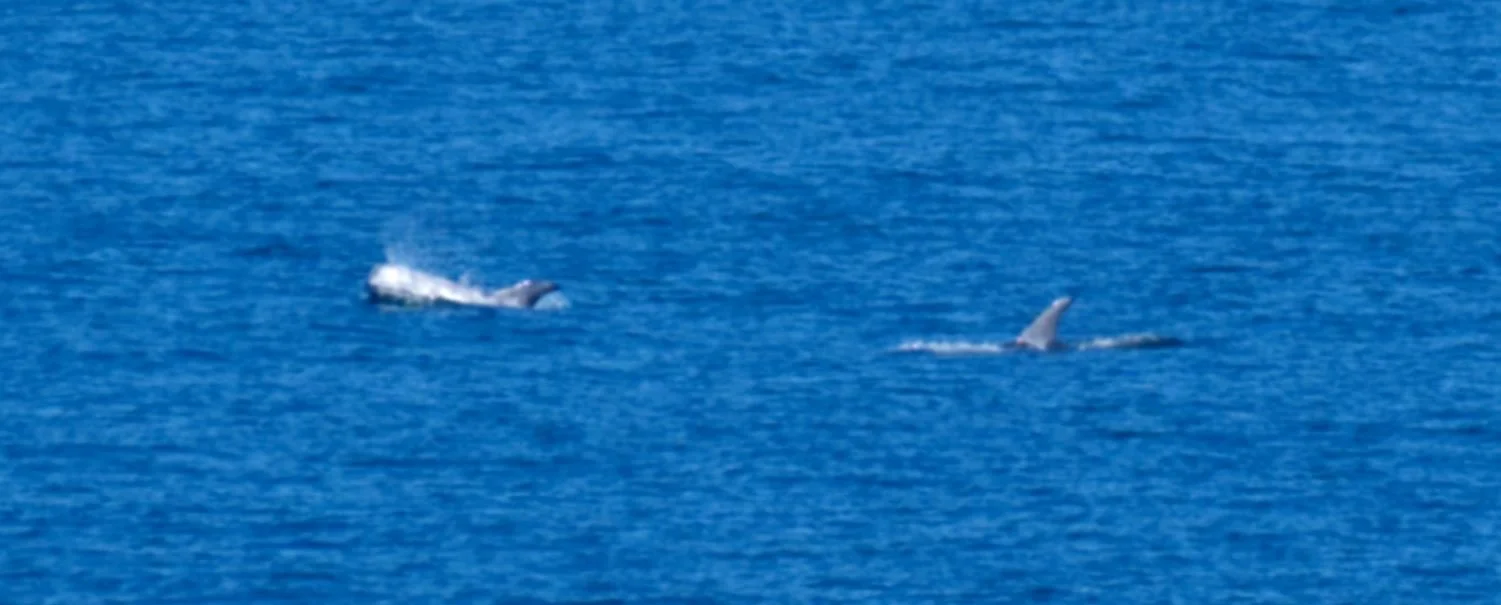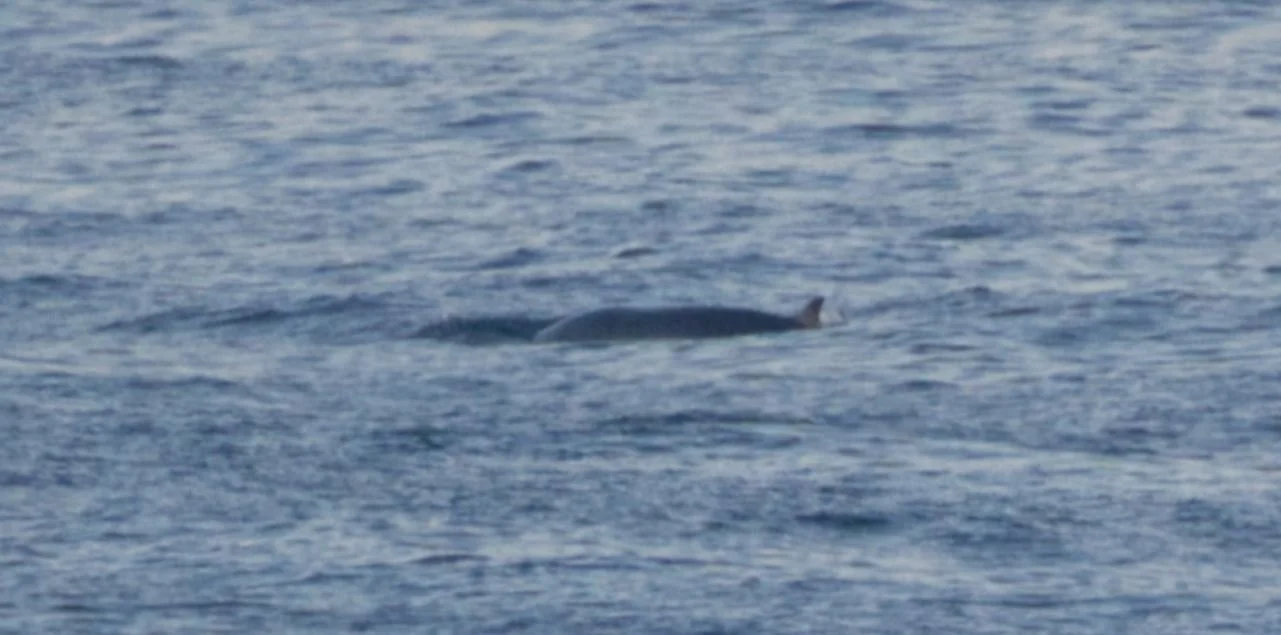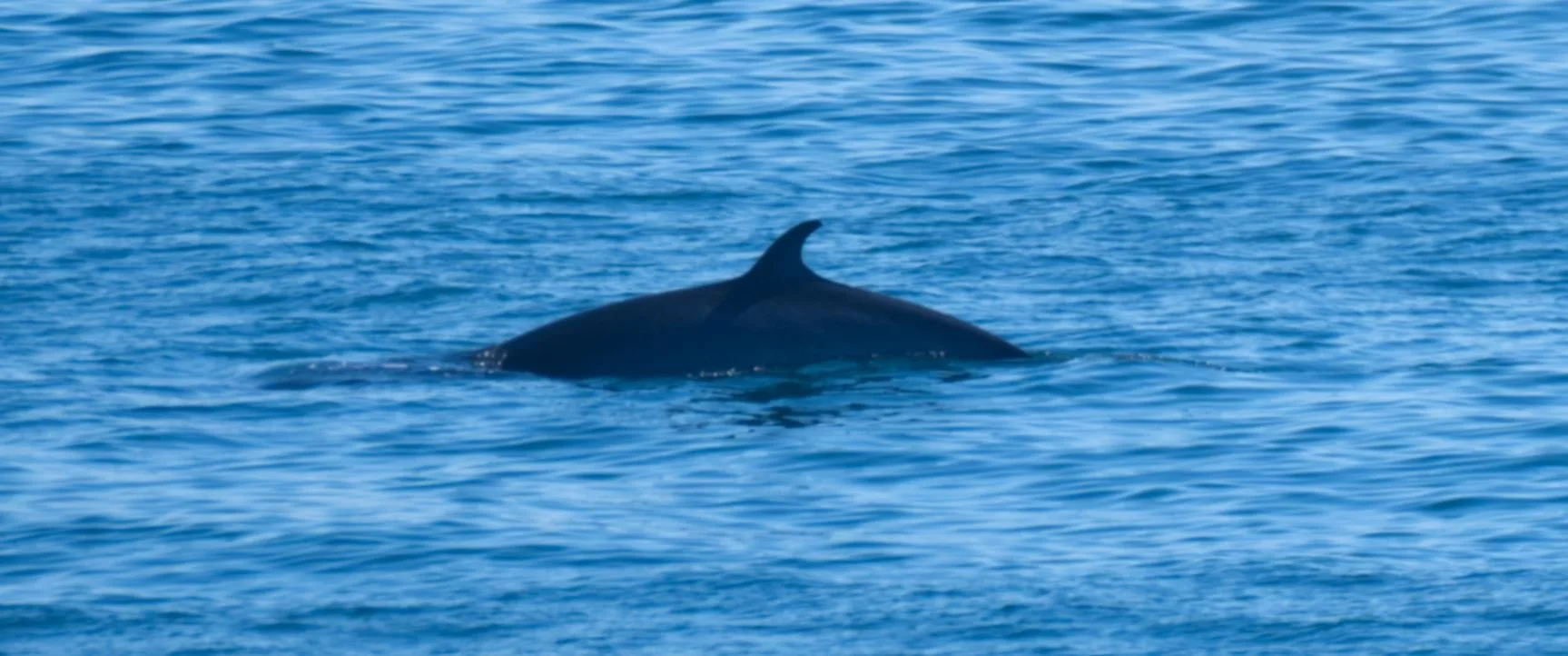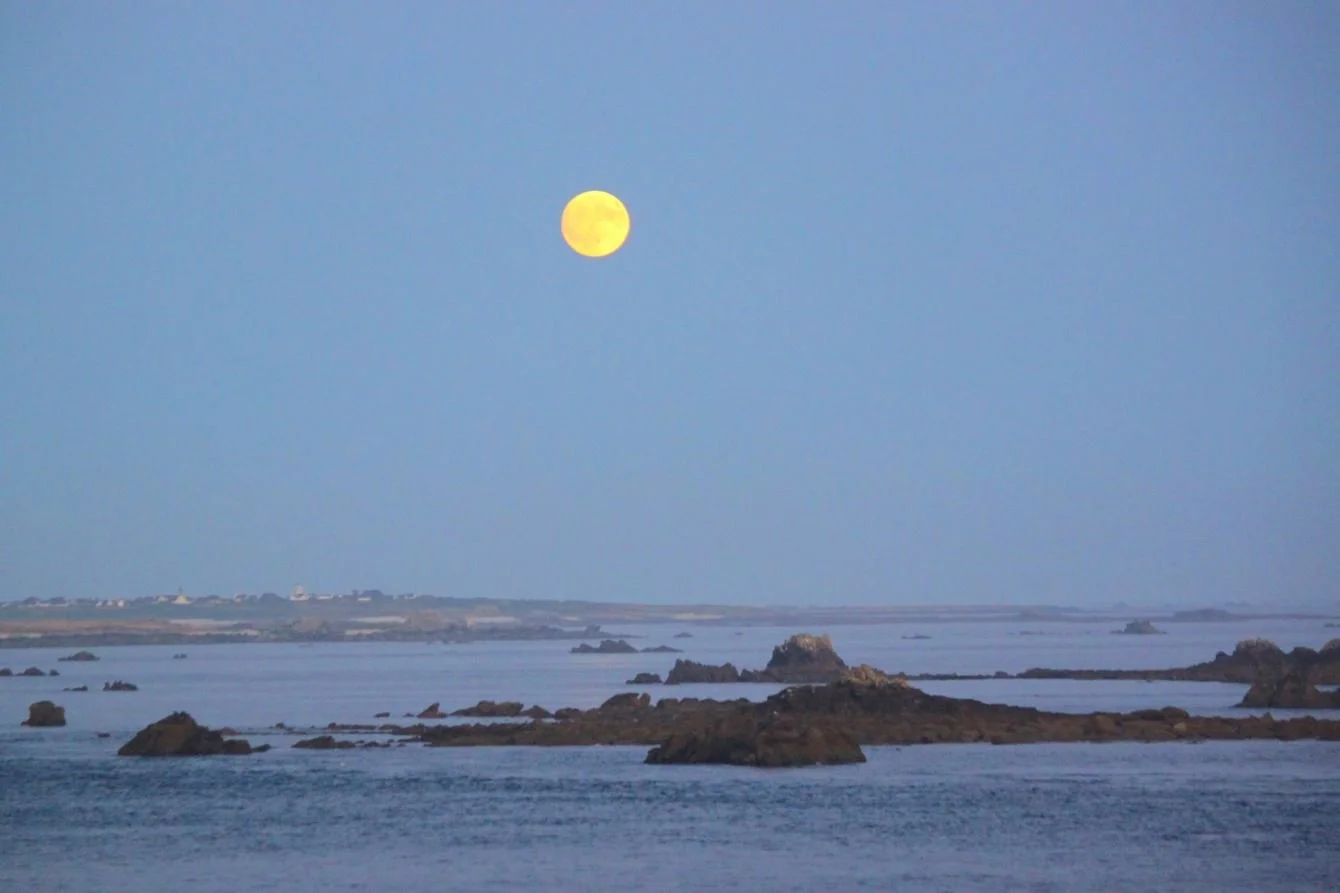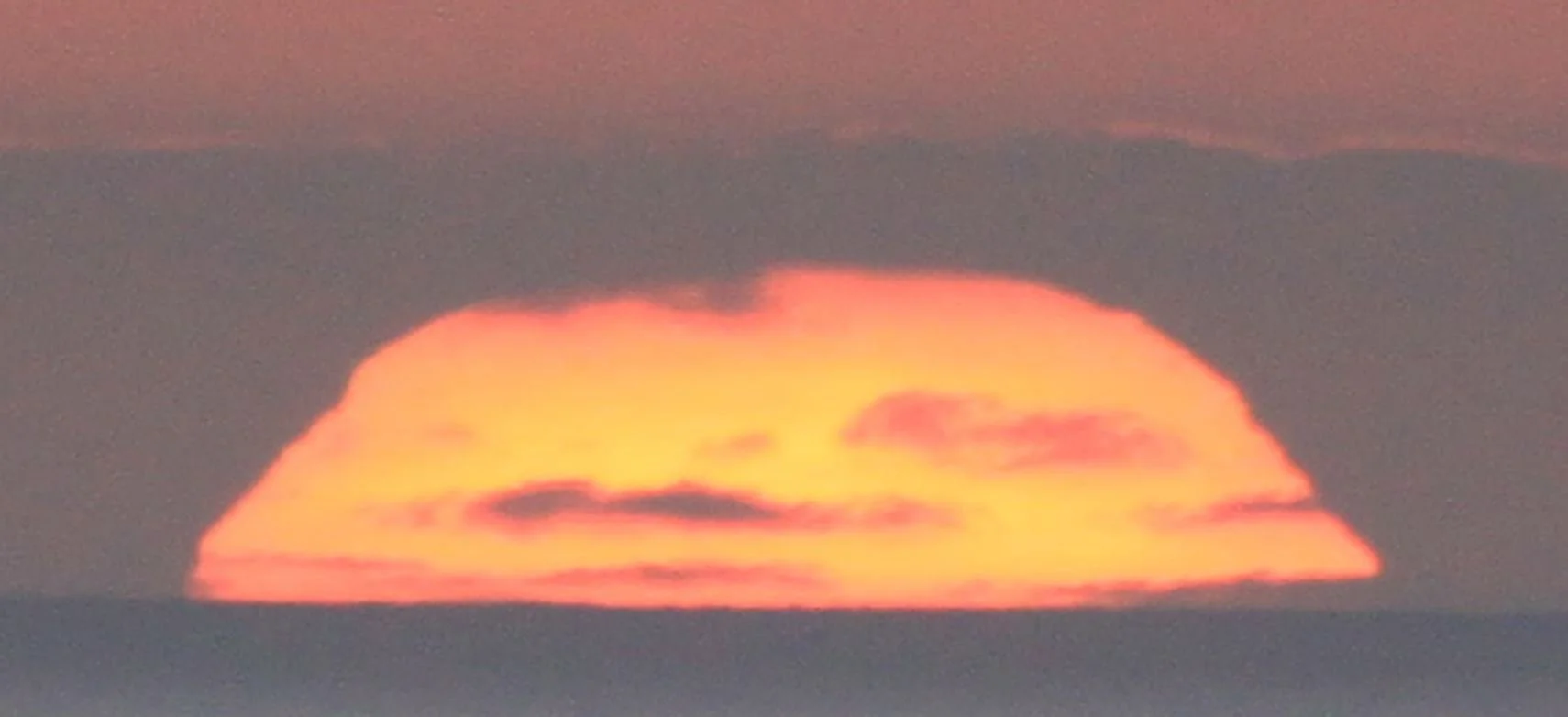Once again, I’m back from time spent in the North Atlantic looking at wild cetaceans, specifically on a Bay of Biscay trip (a journey made between Plymouth in England and Santander in Spain) organised by the wildlife charity ORCA…
Caption: ORCA does its whale surveying aboard various vessels that cover numerous routes. So far, I’ve only done the southern England to northern Spain route; here’s our vessel in Santander, Spain. Images: ORCA; Darren Naish.
Over 520 individual cetaceans were recorded on this one trip, belonging to at least six species. This article mostly serves as an excuse to share photos taken by myself and by my associate Alex Srdic, but let’s also use it as an opportunity to look at news pertaining to western Europe’s cetacean species.
Porpoises, dolphins, and bycatch. A lot of the news about cetaceans around Europe is, of course, bad and concerns deaths caused by bycatch and entanglement. A 2025 report compiled by EIA (the Environmental Investigation Agency) states that over 35000 (not a typo) Harbour porpoises Phocoena phocoena are trapped each year in European waters as bycatch (mostly by gillnets), and that Common dolphin Delphinus delphis numbers killed by bycatch have increased markedly since 2020. The porpoise numbers are ridiculous and we clearly have a major problem. We’re talking about multiple individuals being killed every single day in every single sea and coastal inlet of our region, with the North Sea, Celtic Sea and English Channel being among the areas with highest porpoise mortality. Here’s the UK government’s assessment of this situation if you want more detailed breakdown.
Caption: a Common dolphin montage, showing individuals leaping as well as a family group moving at a more sedate pace. Images: Alex Srdic; lower one Darren Naish.
15 Harbour porpoise were seen on our trip and over 330 Common dolphins, these numbers indicating that both species are abundant and easy to find, despite these concerning declines. It also appears that animals are unable to make a living due to ecological disruption caused by both climate change and industrial fishing. In recent years, reports have increased of dolphins that are in poor nutritional condition, with low fat reserves and even obvious emaciation (e.g., Levesque et al. 2021 for Irish coast; Albrecht et al. 2021 for Celtic Sea). I do not have a positive view at all of the fishing industry but at least it’s becoming better known how bad things are. If you really must eat seafood, make sure that it’s from sustainable fisheries… though even that doesn’t seem to be curtailing things.
Caption: leaping Common dolphin. This species is highly variable in pattern and colour (and there’s ecomorphological variety in beak length as well); this one is interesting in having irregular pale patches on its dorsal cape. Image: Alex Srdic.
A diversion on Stenella dolphins. Having mentioned abundant dolphin species, we also saw around 10 individuals of the mostly deepwater Striped dolphin Stenella coeruleoalba. They tend to be highly acrobatic and prone to leaping high, and their lateral stripes and mostly grey palette are usually obvious.
Caption: leaping Striped dolphin showing eponymous markings. Image: Alex Srdic.
One of the most interesting things about Striped dolphins (to me) is that it’s recently been argued that a related species – the Clymene or Euphrosyne dolphin S. clymene – is a naturally occurring hybrid between the Striped and the Spinner S. longirostris (Amaral et al. 2014), though it seems (for now) that experts are still happy to regard it as a species. This is not, however, as clear-cut as generally implied since not all studies unambiguously support hybrid status for S. clymene (Faria et al. 2022). Yes, the Stenella dolphins do hybridize (including with Common dolphins as well), and some hybrids do backcross with the parent species, but not all studies find all Clymene dolphins to be hybrids!
Caption: a pair of leaping Striped dolphins. Spray and very visible splashing is typical of Striped dolphin leaps. Image: Alex Srdic.
Bottlenose and Risso’s dolphin: all change. On ecological disruption and climate change, at least some cetacean species around Europe’s shores are changing their distributions and perhaps even their habits as a consequence. Sighting records of Bottlenose dolphins Tursiops truncatus around the UK reveal some considerable change. This species is mobile enough that individuals recorded off Scotland have later been seen off The Netherlands (Hoekendijk et al. 2021); however, static and semi-resident groups are also present off Wales and eastern Scotland. Over the past ten or so years, Bottlenose dolphins around the UK have been more frequently reported off the eastern coast of England and are seemingly increasing their range southwards (e.g., Aynsley 2017). Along England’s southern coast, they appear to be moving eastwards, and data from some years suggests reduced presence (which could mean a declining population) in England’s south-west. Anyway, we didn’t definitely see any Bottlenose dolphins on this trip (a contrast to previous years) but… what is this?
Caption: this dolphin (the two images show the same individual) was seen and photographed by several people but remained ambiguous. It was mostly grey with a pale belly and robust rostrum. It looks something like a bottlenose dolphin but also doesn’t quite match one. Images: Darren Naish.
At the same time as the Bottlenose has moved south and east, the remarkable Risso’s dolphin Grampus griseus has been moving north over the last three decades such that it’s now regularly seen off Scotland and the northern isles and is now a relatively abundant animal in European shelf waters, including those around the coasts of the UK (Hodgins et al. 2024). It also seems to be becoming more coastal in habits overall, previous records revealing it to be mostly a deepwater whale. This is presumably linked to changing prey distribution but isn’t well understood.
Prior to this year, I’ve only fleetingly seen a Risso’s dolphin once, and this was a dorsal fin alone. For 2025, we saw a group of nine off the southern English coast, and I also saw what I think was a very white one at close range off the coast of Brittany. Incidentally, Risso’s dolphin is likely not a close relative of ‘typical’ dolphins (like Tursiops and Delphinus): it instead seems allied to the globicephalines – the pilot whales and such (LeDuc et al. 1999, Caballero et al. 2008, McGowen 2011, Geisler et al. 2011). I wrote an article about this in 2012 at Tet Zoo ver 3.
Caption: two of a group of nine Risso’s dolphin seen on our trip. The blunt head, extensive pale scarring and big, slender dorsal fin are all characteristic. Image: Alex Srdic.
Caption: characteristic dorsal fins of Risso’s dolphins. Image: Alex Srdic.
Beaked whales and rorquals. No Bay of Biscay trip would be complete without at least one Cuvier’s beaked whale Ziphius cavirostris sighting, and two were seen on our trip (albeit only distantly and fleetingly). Yes, there’s a bit of a push to get this animal’s name changed to the alternative ‘Goose-beaked whale’ but that certainly hasn’t caught on among people who study whales or survey them. This species dives to 2.9 km and thus holds the current deep-dive record over elephant seals and sperm whales. As you’ll recall if you’re a regular reader, I’ve seen numerous beaked whales (both Ziphius and Mesoplodon) on these trips before and had high hopes. Alas.
Caption: a mid-sized whale identified as a Northern minke, though the field sign used to support this identification are not immediately clear from this photo. Minke surface briefly once or twice and then disappear. Image: Alex Srdic.
Caption: a second Northern minke individual seen closer to the UK, this time giving us a great view of its distinctive dorsal fin. Image: Alex Srdic.
Finally, we saw numerous (11) Northern minke whales Balaenoptera acutorostrata. We really should call them ‘Northern minke’ rather than just ‘Minke’ since a second species – the Antarctic minke B. bonaerensis – has been reported from the North Atlantic (a lone one was killed off Jan Mayen in 1996 and hybrids are known for the region too) (Glover et al. 2010) and there are suspicions that they might be present in the region more than realized so far. We saw no Fin whales B. physalus this time, which is weird given the more than 30 seen on 2024’s trip.
The unidentified ones. As typical for sea trips that involve looking at cetaceans, numerous animals were seen for which definitive identifications couldn’t be achieved. A big, unidentified whale was seen moving swiftly away from the ship’s wake at one point, an unidentified beaked whale was seen, and some number of indeterminate dolphins were also recorded.
During the time of our survey, two Killer whales Orcinus orca were reported from off the Scilly Isles and recognised on the basis of their markings as individuals from an Iberian population. Needless to say, we had vague hopes that we might get to see them… but nope.
Caption: I like seeing animals, but landscapes, seascapes and the sky are all great as well. We had fantastic views of the full moon over various coastal seascapes, like this one – I think off the coast of France. Image: Darren Naish.
That’s where I’ll end. The trip was massive fun and I’m thrilled with what I saw. Consider supporting ORCA and joining their trips if you can. Massive thanks to Alex for use of his photos, and thanks too to my travel companions Matthew Harrop and Richard Hing.
Caption: these trips are one of the few occasions on which I get to see unobstructed views of both sunrise and sunset. This sunrise is from the morning of 11th July 2025. Image: Darren Naish.
Cetaceans have been covered a few times at Tet Zoo before, see…
Whale Watching in the Bay of Biscay, August 2019
Extreme Cetaceans, Part 1, September 2019
Extreme Cetaceans, Part 2, September 2019
Extreme Cetaceans, Part 3, December 2019
Kogia, Shark-Mouthed Horror, May 2023
In Memory of Richard Ellis, Influential Artist and Author, June 2024
You can support this blog and my other projects here at Patreon
Refs - -
Amaral, A. R., Lovewell, G., Coelho, M. M., Amato, G. & Rosenbaum, H. C. 2014. Hybrid speciation in a marine mammal: the clymene dolphin (Stenella clymene). PLoS ONE 2014; 9: e83645.
Aynsley, C. L. 2017. Bottlenose Dolphins (Tursiops truncatus) in North-East England: a Preliminary Investigation into a Population Beyond the Southern Extreme of its Range. MSc thesis, Newcastle University, Newcastle, UK.
Caballero, S., Jackson, J., Mignucci-Giannoni, A. A., Barrios-Garrido, H., Beltrán-Pedreros, S., Montiel-Villalobos, M. G., Robertson, K. M., Baker, C. S. 2008. Molecular systematics of South American dolphins Sotalia: sister taxa determination and phylogenetic relationships, with insights into a multilocus phylogeny of the Delphinidae. Molecular Phylogenetics and Evolution 46, 252-268.
Hodgins, N. K., Steel, E. M., Dyke, K., Walters, A. E. M., Dolman, S. J., Hall, K., Neave-Webb, E., Evans, P. G. H., Bird, C., Robinson, K. P., Marwood, E. M., Foubister, R., Harrop, H., Knight, A. & Munro, K. 2024. Using citizen science to better understand Risso’s dolphin (Grampus griseus) presence in northeast Scotland and the Northern Isles. Frontiers in Conservation Science 5, 1366064.
Hoekendijk, J., Leopold, M. & Cheney, B. 2021. Bottlenose dolphins in the Netherlands come from two sides: across the North Sea and through the English Channel. Journal of the Marine Biological Association of the United Kingdom 101, 853-859.
LeDuc, R. G., Perrin, W. F. & Dizon, A. E. 1999. Phylogenetic relationships among delphinid cetaceans based on full cytochrome b sequences. Marine Mammal Science 15, 619-648.
Levesque, S., O'Donovan, J., Daly, M., Murphy, S., O'Connell, M., Jepson, P., Deaville, R., Barnett, J., & Berrow, S. D. 2021. Supply of Vertebrate Necropsy and Sample Recovery Services Merged Final Reports. Marine Institute.
McGowen, M. R. 2011. Toward the resolution of an explosive radiation – a multilocus phylogeny of oceanic dolphins (Delphinidae). Molecular Phylogenetics and Evolution 60, 345-357.
